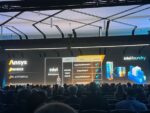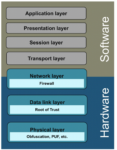In December 2023, we published the Intel Revenue forecast for external wafer sales, gave a breakdown on how customers plan to ramp the foundry. The forecast is still valid (it assumes Intel executes on all plans) but since then we have a better understanding of Intel’s strategy and scenarios that could unfold.
The scenarios are based on Intel’s strengths and weaknesses which are quite different than TSMC and quite different than what we expected 2-3 years ago.
Background:
In 2019-2021, it became clear that Intel was a distant follower to TSMC in technology and that they needed to catch up or just outsource everything to TSMC/Samsung/others. Intel BUs complained about technology delay and cost and wanted to work with TSMC.
• It seemed like Intel would move to outsource, but Pat changed the plans based on discussions in 2021. Intel would allow BUs to choose Internal or TSMC. They would (and still do) come up with dual sourcing options and plans until later in the product development lifecycle.
• Intel cannot lead in tech with the small scale of current Intel (Times change, Intel is the third priority for equipment companies). Equipment vendors do much of the process and all of the tool development. You need scale to get their support. So Intel needs to offer foundry services to roughly double the scale of Intel wafer output. Intel needed to go “all in” on being a leading foundry.
• Pat [hypothetically] said: “…Business units say manufacturing is the problem. Manufacturing say BU is the problem. Fine …. Each of you can do what you want…. BUT we will make major decisions based on your execution.”
Hence where we are today: Intel is ramping TSMC on chips for processors of all types. Some leading products are 100% TSMC. And Intel is promoting foundry for others at the same time. 5 nodes in 4 years (not really, but that is a different report).
The BUs are extremely happy with this. So far multiple products have been moved to TSMC and the flexibility in using N5,N3,N2 is something they love. TSMC price is about the same as Intel’s cost, so BU margins will increase.
But how does Intel compete cost effectively with TSMC and ramp foundry and pay for all these fabs?
We overlooked a couple things until our IEDM discussions with various people in December 2023.
• Intel still wants to win and be better than TSMC. It seems unlikely… but it might not matter.
• The US government buys chips for internal products and DoD items. No strategic DoD product has TSMC parts in it. TSMC does not meet the criteria. As a result, those products have technologies that are not close to leading edge. IBM (past), GF and other defense approved companies make chips for those products but they are nowhere near leading edge. They would love to use leading edge but they need a DoD approved US company. While DoD parts are relatively low volume, the government could expand this to any Government supply chain (they track detailed supply chain and factories for all parts). IRS, Social Security, etc. TSMC cannot fill this today and it would require massive regulation to even have Samsung US or TSMC US support it. Trust me, I have done the audits with government products before, it can be extremely painful.
Also, While Intel is not set up from a scale or from a cultural perspective to be a leader in cost, US Government pays cost plus and incredibly high prices for products. Intel could have half filled fabs and still have great margins. You can see this at some government suppliers today.
• The third one also could have been predicted but was missed. Leading edge is too expensive and complex. So many foundries…. GF, UMC, SMIC, Grace, Tower have no ability to provide leading edge or even 2 generations behind technology. Intel can partner with them, provide “more modern” technologies, provide scale etc. All companies not named TSMC or Samsung could GREATLY benefit from partnering with Intel and this allows them to compete with Samsung and TSMC.
Based on the above strategies. Intel could outsource most of its silicon to TSMC to keep the BUs happy and STILL be a leader in foundry just based on being the “US Fab company” and “advanced fabs to other foundries”. These customers are much more compatible with Intel than selling to Apple, AMD, Nvidia, and Broadcom.
This is a different foundry model but one where Intel has a strength and can potentially dominate. This all may or may not work. We have quantitative milestones you can track to see if Intel is successful.
The Three Potential Foundry Scenarios are:
• *Intel Foundry Success*: Intel has competitive processes at competitive prices and ramps up to be another dominant leading edge foundry. Intel is leader and Intel BUs use Intel processes. Revenue and profits grow.
• *Intel fills TSMC gaps*: Intel supplies all other foundries, Intel supplies government. Both have few other options so they pay the price needed. Revenue grows steadily over then next 10-15 years.
• *Intel is IDM2.0 = IBM2.0*: Intel struggles to ramp government work and factories. Intel’s foundry partners decide it’s not worth it to work with them and the processes are unsuccessful. The fabs are given away, or cancelled, or underloaded. Eventually Intel foundry is absorbed.
We have more details on each and in the next few years, the probability of each scenario will change. We have updates on the probability and what tactics, models, and strategies Intel is using. More importantly we provide milestones so others can track progress…. and we track the impact to P&L and Capex.
Foundry Day Update (BREAKING NEWS): All of the presentations and commitments support the background we show, the strategies, and the scenarios.
Mark Webb
www.mkwventures.com
Also Read:
ISS 2024 – Logic 2034 – Technology, Economics, and Sustainability
Intel should be the Free World’s Plan A Not Plan B, and we need the US Government to step in










